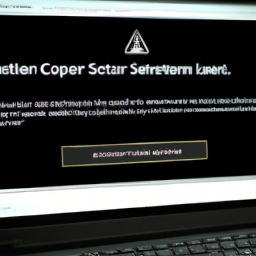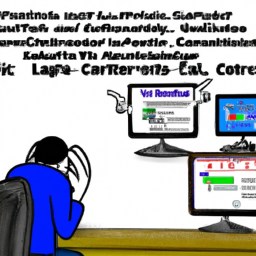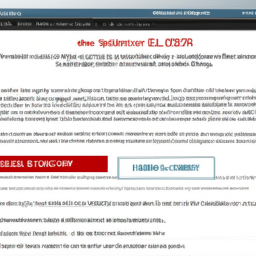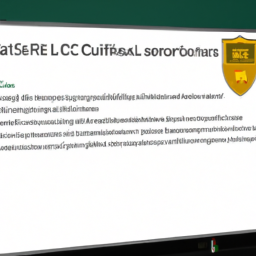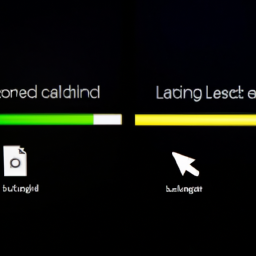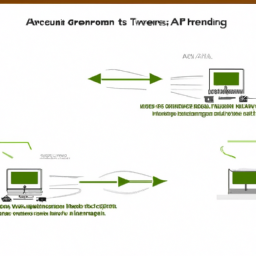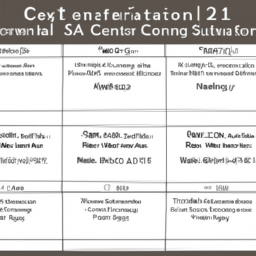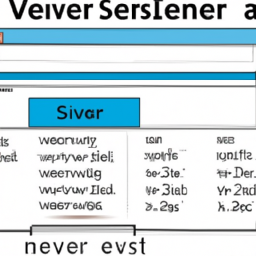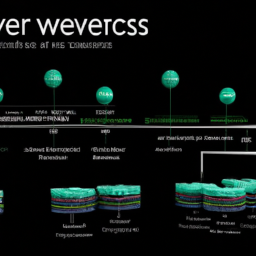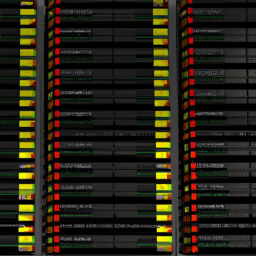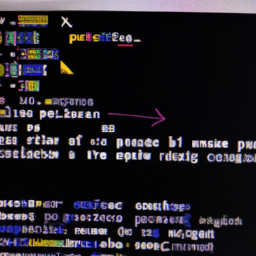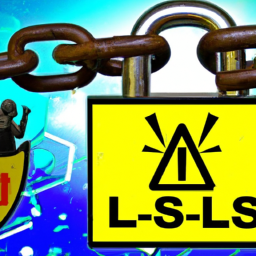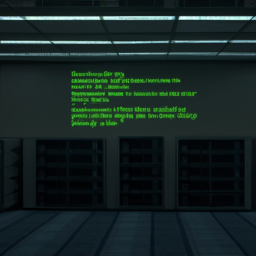Are your error logs taking up all the space on your disk, causing your system to slow down and grind to a halt? It may feel like a never-ending deluge of data flooding your storage, but fear not! In this troubleshooting guide, we will show you how to effectively deal with error logs overflowing your disk space.
First, you need to identify the source of these error logs. Is it a specific application or system component that is generating an excessive amount of logs? Once you have pinpointed the culprit, it’s time to analyze the size and frequency of these logs. This will help you determine the best course of action to take.
Next, we will guide you through the process of clearing or archiving old error logs. By removing outdated logs, you can free up valuable disk space without losing any important information. Additionally, we will explore the implementation of log rotation or size limit policies, ensuring that your error logs don’t become an ever-growing monster.
To further optimize your system, we will discuss log settings and filtering options. By fine-tuning these configurations, you can minimize the amount of unnecessary data being logged, saving precious disk space.
Finally, we will emphasize the importance of regularly monitoring and maintaining your error logs to prevent future overflow issues.
With this troubleshooting guide, you will regain control over your disk space, ensuring smooth system performance and efficient error log management. So let’s dive in and conquer those overflowing error logs!
Key Takeaways
- Analyzing the size and frequency of error logs helps determine the best course of action for dealing with disk space issues.
- Clearing or archiving old error logs frees up disk space and prevents overflow.
- Implementing log rotation or size limit policies can prevent future disk space overflow issues.
- Regularly monitoring and maintaining error logs is essential to prevent system disruptions and potential data loss.
Identify the Source of the Error Logs
Now, let’s dive into how we can pinpoint the root cause of those pesky error logs hogging up all your precious disk space. Error log management tools are essential in identifying the source of error logs. These tools provide a centralized view of all error logs across your system, allowing you to quickly identify the culprits.
By analyzing the size and frequency of error logs, you can determine which errors are causing the most impact on system performance. This information helps prioritize troubleshooting efforts, ensuring that you address the most critical errors first.
So, let’s move on to the next step and analyze the size and frequency of error logs to further optimize your disk space usage.
Analyze the Size and Frequency of Error Logs
First, you need to assess how frequently and how large the error logs are becoming to understand the magnitude of the problem. Analyzing log patterns is crucial to identify any recurring errors or patterns that may be causing the overflow of disk space.
By automating log analysis, you can save time and effort in manually going through each log entry. Look for any spikes in log size or frequency, as this can indicate a significant issue that needs to be addressed. Additionally, check if there are any unnecessary or irrelevant log entries that can be filtered out to reduce the log size.
Once you have analyzed the size and frequency of the error logs, you can proceed to the next section about clearing or archiving old error logs to free up disk space.
Clear or Archive Old Error Logs
To alleviate the issue, it’s time to address the accumulation of outdated error logs by either clearing or archiving them.
Start by implementing error log compression techniques to reduce their size. This can help free up valuable disk space without losing any important information.
Additionally, consider utilizing cloud storage for error logs. Storing them in the cloud not only saves disk space but also provides easy access and ensures data integrity. You can set up automated processes to transfer logs to the cloud, making it a seamless and efficient solution.
By clearing or archiving old error logs and utilizing cloud storage, you can effectively manage disk space and keep your system running smoothly.
Moving forward, it’s important to implement log rotation or size limit policies to prevent future overflow issues. This ensures that error logs are regularly cleared or archived, maintaining optimal system performance.
Implement Log Rotation or Size Limit Policies
Ensure that you don’t let those pesky error logs run amok by implementing log rotation or size limit policies. By implementing log compression, you can reduce the disk space occupied by error logs. Log compression allows you to compress older logs, freeing up valuable disk space without losing any crucial information.
Additionally, automating log rotation ensures that logs are regularly rotated to prevent them from overflowing the disk space. By setting up a size limit policy, you can specify the maximum size that a log file can reach before it’s rotated or archived. This helps in maintaining optimum disk space and prevents errors due to disk space overflow.
Moving on to the subsequent section about optimizing log settings and filtering, you can further fine-tune your log management process.
Optimize Log Settings and Filtering
Get the most out of your log management process by optimizing log settings and applying effective filtering techniques.
One way to optimize log settings is to reduce log verbosity. This means configuring your logging system to only capture essential information, such as error messages, while excluding unnecessary details. By doing so, you can significantly reduce the size of your logs and prevent them from overflowing your disk space.
Additionally, automate log analysis to streamline the troubleshooting process. Utilize tools or scripts that can automatically analyze and flag critical errors, making it easier for you to identify and address them promptly.
By optimizing log settings and filtering, you can ensure that your error logs are concise and relevant, making it easier to regularly monitor and maintain them.
Regularly Monitor and Maintain Error Logs
Regularly monitoring and maintaining error logs is crucial for keeping your system running smoothly and effectively identifying and addressing any issues that may arise. To ensure optimal performance, it’s important to establish a monitor frequency that suits your specific needs.
By setting up regular checks, you can promptly detect any errors or warnings before they escalate and cause significant disruptions to your system.
Additionally, monitoring the disk space occupied by error logs is essential for preventing overflow and potential data loss. By regularly reviewing the disk space usage, you can take proactive measures such as archiving or deleting old logs to free up space and maintain a healthy log environment.
Implementing these practices will help you maintain a well-organized error log system and ensure the efficient operation of your system.
Frequently Asked Questions
How do I troubleshoot error logs that are causing disk space overflow?
To troubleshoot error logs causing disk space overflow, start by checking the size and location of the log files. Identify the logs that are consuming the most space and determine if they can be safely deleted or compressed. Consider adjusting the log rotation settings to limit their growth.
Additionally, ensure that the error logs are properly configured to capture only essential information. Regularly monitor and manage disk space to help prevent future overflow issues.
What are the potential consequences of error logs overflowing disk space?
When error logs overflow disk space, it’s like a dam bursting and flooding a peaceful valley. The impact on system performance can be significant, causing slow response times and even system crashes.
But it’s not just performance that suffers. The potential loss of important error data can hinder troubleshooting efforts, making it harder to identify and resolve issues.
To prevent these consequences, it’s crucial to regularly manage and monitor error logs to ensure they don’t overflow.
Can I manually delete error logs to free up disk space?
Yes, you can manually delete error logs to free up disk space. However, it’s recommended to follow best practices for error log rotation and retention. Manual log management allows for more control and immediate action, but it can be time-consuming and prone to human error. Automated log management, on the other hand, is efficient and reduces the risk of manual mistakes. It’s crucial to regularly rotate and retain error logs to ensure proper system monitoring and troubleshooting.
How can I set up an automated process to clear or archive old error logs?
To ensure your system stays afloat amidst the deluge of error logs, set up an automated log rotation process. By implementing this, you can effortlessly keep your disk space from drowning in a sea of logs.
Additionally, consider log archival, which allows you to safely store and organize old error logs for future reference. With these measures in place, you’ll have a streamlined system that navigates the treacherous waters of error logs with ease.
Are there any tools or software available to help manage error logs and prevent disk space overflow?
Yes, there are error log management software available that can help you efficiently manage your error logs and prevent disk space overflow. These tools provide features like automated log rotation, compression, and archiving.
Additionally, they allow you to set retention policies to delete or move old logs. It’s also important to follow best practices for error log management, such as regularly reviewing and analyzing logs, setting proper log levels, and implementing log monitoring for proactive error detection.
Conclusion
In conclusion, troubleshooting error logs overflowing disk space requires a systematic approach. By identifying the source of the error logs and analyzing their size and frequency, you can effectively manage them.
Clearing or archiving old logs, implementing log rotation or size limit policies, and optimizing log settings and filtering are crucial steps to maintain a healthy system.
Regularly monitoring and maintaining error logs will ensure smooth operations. So, don’t let those logs pile up and take charge of your disk space today!


















